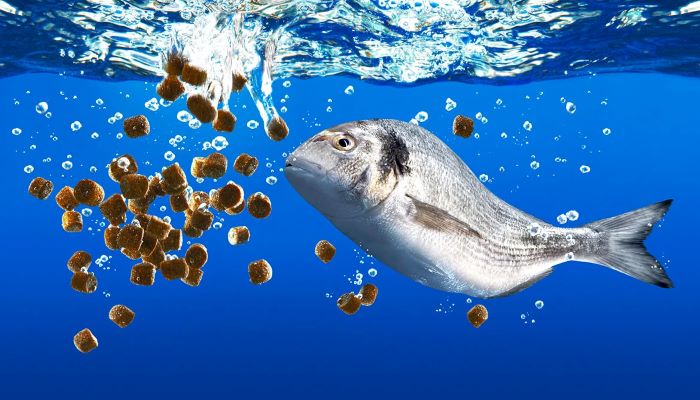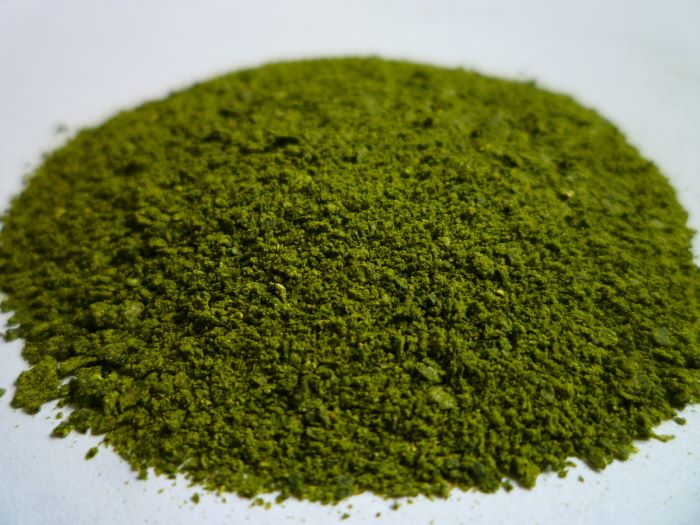The beauty of making your fish food is that you can source all the products as sustainably as possible to ensure you are feeding your fish the best quality food. Natural fish foods are cost-effective and easier to make than you expect.
Making fish meals at home is relatively easy. It is an excellent method for preparing a diet that fits the nutritional needs of all your fish. While commercial foodstuffs also include a wide range of nutrients, they are costly and contain flavor-preserving and flavor-enhancing additives.
This article will explain how to make natural fish food at home. You will understand the excellent fish recipes available to you. The fish’s natural food sources include phytoplankton, zooplankton, annelids, worms, insects, mollusks, and so on. A comprehensive and well-balanced diet is comprised of natural foods. The need for natural foods differs between species and between age groups
Diverse forms of food are suited for feeding bottom-dwelling species and those swimming in the vegetation or in the middle of the water. Remember fish that live almost entirely beneath the surface. In this post, we will learn how to produce natural fish food to maintain the health and appearance of aquarium inhabitants!
How to Feed Your Fish Properly
Table of Contents
Understanding Fish Nutrition

Before we start manufacturing natural fish food, we must understand the nutritional requirements of a common fish.
The majority of aquarium fish are omnivores or carnivores. Aquarium fishes are either secondary or tertiary consumers at the food chain level.
- Tertiary consumers are predators of other fish. These fish will be at the top of the aquarium’s food chain.
- Secondary consumers consume mostly plankton, insects, and small fish that eat plants. Its most well-known representative is the goldfish.
- Primary consumers Herbivores typically inhabit coral reefs and other saltwater ecosystems. The Surgeonfish is an example of this category.
Secondary and tertiary groups of fish and invertebrates have more specialized meals; the diet of a starfish is a typical example.
What is natural fish food?
A natural diet for aquarium fish is considered the best option. Regarding fish, this term refers to living animals, and herbivorous aquarium dwellers will likely consume algae, vegetables, or aquatic plants.
. Finally, a handful of tips: Flakes and micro granules should be used to feed small fish species and those with narrow mouth openings. Larger species that gather food from the water’s surface should be fed chips and sticks, whereas bottom fish should be fed flakes, pellets, tablets, or wafers.
It is naturally occurring in the pond. Detritus, bacteria, plankton, worms, insects, snails, aquatic plants, and fish may also be present. Their quantity is very reliant on the water quality. Liming and fertilization, especially organic fertilization, can help you give your fish ample natural food.
Nutrition and Feedstuffs
Knowing fish nutrition and their dietary requirements will allow you to make excellent natural fish food.
When preparing natural fish food, you must match the ingredients to what your fish would consume in the wild. This is critical, as virtually every species of fish needs certain nutrients. These nutrients are important to support the daily activity of all fish.
- Protein is the most important nutrient. It should comprise up to 60% of a fish’s feed and is derived from live and frozen food and premium flake and pellet compositions.
- The second most essential nutrient is fats and lipids. These are obtained from vegetables and carnivorous food and feed the fish’s metabolism with energy throughout the day.
- In this order, carbohydrates come last. It’s best to get them from plants if you need a quick energy boost. Carbohydrates are not necessary for certain fish and are only needed by others in very small amounts.
When a fish consumes food, the energy is taken and processed in different biological activities. Up to 30% of a fish’s energy is spent to control body temperature, most of which is fat. As cold-blooded organisms, fish must rely on the temperature of the water to retain body heat.
Approximately 70% of the energy used by a fish is used for physical activity, metabolism, reproduction, and growth. The fish use less energy for growth and development as it ages. A small portion of daily food intake is not digested and is elimina
ted as waste.
Natural foods for fish
There are several kinds of natural foods
- Natural fish foods in a fish pond are diverse and usually contain a complex mixture of plants and animals.
- They range from microscopic to relatively large size.
- They may be alive or dead (detritus) and available from bacterial decomposition
- They are generally present in various parts of the pond:
- near the shore, such as rooted high plants;
- floating in the water, such as plankton;
- on the surface of or within the bottom (benthic material or benthos*) such as worms, insect larvae and snails;
- covering the surface of submerged objects (biological cover or autwuchs*);
- swimming around, such as aquatic insects, frogs and fish (nekton*).
Materials Needed for Natural Fish Food
Here are some of the materials you will need to make natural fish food for your aquarium:
Kitchen Scale
Measuring ingredients in grams is easier using an appropriately sized scale. Digital or not, so long as you can accurately weigh vegetables and meat, you’ll be in great shape!
Blender or Food Processor
You’ll want to choose your blender based on the ingredients you’ll frequently be using. Basic blenders may need more power to dice hard ingredients like fresh carrots. These recipes also use little additional water, which can cause models designed for fruit smoothies to falter.
Ice Cube Trays
Once you’ve thoroughly blended your fish food, you’ll need molds for your product until it freezes. Ice cube trays give you conveniently sized and separated blocks to provide your fish!
If you’ve ever purchased frozen food, I recommend reusing the trays as they are typically smaller than ice cubes and perfect for small community fish feedings!
Plastic Wrap
Once you’ve blended and added your mixture to an ice cube tray, if the tray doesn’t come with some covering or lid, you’ll want to make one using plastic wrap. This keeps the food from getting freezer burn, which toughens food and makes it less tasty even when thawed.
Simple Natural Fish Food Recipe
This homemade fish food recipe provides a complete and nutritious flake food for most tropical aquarium inhabitants.
Ingredients
- 1 lb spinach
- 1/2 lb broccoli stems
- 2 cloves garlic
- 1 whole zucchini
- Stringy guts from one winter squash
- 1/2 lb sunfish fillets (skin on)
- 4 earthworms
- 1 Tbs corn starch
Process
This section describes how to prepare natural fish food.
- Prep your ingredients. The leafy greens must be washed, and the harsher vegetables must be parboiled. All frozen items must be defrosted. Scales should be removed from fish, but bones should remain.
- Blend it. That says everything! Place all ingredients in a food processor or blender and pulse until a uniform consistency is achieved.
- Strain the mixture. Squeeze the solution through a medium-fine mesh using a spatula. This is the most time-consuming step, but it is necessary to ensure that no fish will be harmed by eating bones or vegetables that are too large.
- Dry it out. Devote two to three hours to the flaking of your fish food. Covering big baking sheets with wax or parchment paper is the initial step in this procedure. Then, pour the concentrated mixture onto the plates and spread it into a very thin layer (1/8–1/4 inch thick). Dry the mixture in a 150°F oven for three to four hours or until it is completely crumbly.
- Break it apart. The sheets will separate into large pieces. They are broken down by hand until they achieve the proper size. Keep in a cold and dark place. The fish food will last for more than a year in an airtight container.
Feed Preparation
There is no single method for preparing natural fish feeds; however, most approaches begin by forming a dough-like mixture of materials. The dough begins with mixtures of dry components that are finely milled and mixed.
After kneading the dough, the solvent is added to get the proper consistency for feeding the fish. Multiple species of fish, including eels and tiny aquarium fish, can be fed the same dough. It is transformed into pellets or flakes by pelletizing or rolling the dough. The quantity of water, temperature, friction, pressure and heat significantly impact pellet and flake characteristics.
For instance, excessive water in the mixture produces a mushy pellet. If there is insufficient moisture, the pellet will crumble. Proteins, and vitamins, in particular, are severely damaged by high temperatures. Therefore, avoiding keeping diet ingredients at or above 70°C (158°F) and avoiding preparing dry feeds with water over 92°C (198°F) is essential.
Storage Procedures
A small gas or electric heater can cook the ingredients and mixtures. A few trivets beneath hot pots will protect surfaces and tabletop surfaces. Hand-mixing ingredients with a rotary mixer or wire whisk are possible, but an electric mixer or hand blender is more effective. After blending, the dough can be shaped into various forms.
. The dough is extruded into threads of various diameters by a pasta machine, food or meat grinder. As the tubes emerge from the die’s outer surface, they can be cut to the proper length with a knife or crushed by hand to create pellets. A potato ricer also elongates the dough into identical-sized noodles.
The dough is pressed into thin strips using a manual or motorized pasta machine to create flakes. The pellets or thin layers can be put on a baking tray and cooked in a low-temperature or forced-air oven using a cookie sheet. A little food dehydrator also accomplishes the work admirably.
A portable oil sprayer or mister can be used to add additional oil and pigment to pellets. To separate pellets into various sizes, a set of sieves is necessary. The prepared feeds are stored in freezer bags, and employing a bag vacuum sealer will significantly increase the shelf life of both the components and the feed.
The feed can be double-bagged and stored in the freezer for six months before being thrown. Ideally, dried larval meals are refrigerated and not frozen for up to three months.
The nutrient content of a final diet, especially one employed for practical reasons, should be assessed. Additionally, anyone planning to use unusual substances in their fish diets should have them evaluated before use.
Natural Fish Food Benefits
There are lots of advantages to preparing natural food for your fish.
One of the primary motives is to save costs.
Fish food of the finest quality may be incredibly expensive, with premium brands selling for over $40 per tub. Cooking your meals can help you save money. Making food at home eliminates the labor expenditures factored into the cost of factory-made food.
Another key advantage of prepared food is its quality
Multiple business products contain carbohydrate-heavy chemicals and inexpensive fillers that provide zero calories. Corn, flour, wheat, and potato are among the most common food additions. Certain foods contain carbon-based fillers and debris.
These are not essential components of a fish’s nutrition, and some fish cannot properly digest them. In addition, they enhance the calorie amount without contributing any nutrients.
These additions can lead to weight gain and health problems, particularly for Nano fish.
Natural fish foods ensure high quality and more nutrients.
The majority of factory-made foods have a low ability to retain nutrients. Some even decrease their nutritious value upon exposure to water.
Finally, natural food makes it easier to match a fish’s normal diet.
You have control over the ingredients when you make your own natural fish food. Understand your fish’s normal diet and nutritional requirements thoroughly, and choose products that provide precisely what they need.
For example, you can put lettuce, peas, cucumbers, spinach, and other green veggies under herbivorous. As opposed to herbivores, carnivores can even be fed frozen fish filets.
Remember that the finest components for homemade fish food depend on the species of fish being fed.
Recent Posts
link to Does Aquarium Fish Sleep?/ A Comprehensive Guide! link to Can 2 betta fish live together ? All you need to know about betta fish
FishClans is a Professional Aquarium Fishing Platform. We’re dedicated to providing you the best of Aquarium Fishing, with a focus on dependability and Aquarium. We’re working to turn our passion for Aquarium Fishing into a booming online website

Lena Whitmore is the lead writer at FishClans.com, bringing over 10 years of fishkeeping expertise and a master’s degree in Marine Biology to the site. Her extensive knowledge and practical tips have established her as a respected authority in the aquarist community. Lena’s work has appeared in leading publications and she frequently speaks at industry events.
Connect with Lena and FishClans on Facebook, Pinterest, and Instagram.

